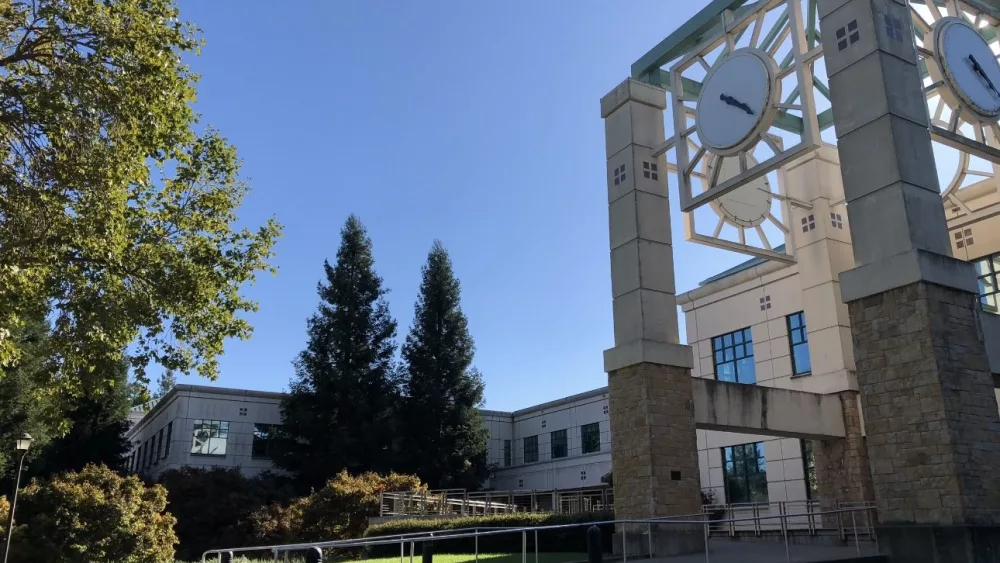
Welcome to the Business of Wine issue of Northbay biz magazine! Get ready to uncork the rich, complex world of wine as we take you on a journey through the region’s vineyards, wineries and tasting rooms. This issue is overflowing with fascinating stories and insights that will deepen your appreciation for this timeless elixir. We’ve got everything from in-depth profiles of the talented people who grow and produce the wine to an exploration of its rich—and complicated—history. And if you’re looking for the latest and greatest in wine trends and innovations, we’ve got you covered there too. So, raise a glass, and let’s dive in!
We Built this City
During the late 1800s, fledgling communities in Napa and Sonoma experienced an influx of Chinese immigrants who worked in the vineyards and wineries. Despite their significant contributions to the local economy, these Chinese laborers were subjected to pervasive and systematic racism that deeply affected their lives and livelihoods.
At the time, many white Americans harbored racist attitudes toward Chinese immigrants, fueled in part by the belief that they were taking jobs away from white workers. These attitudes were particularly strong in the agricultural sector, where many Chinese laborers were employed as farmhands, grape pickers and winery workers.
Chinese laborers faced discrimination in many forms. They were paid less than their white counterparts for the same work and were often subjected to longer hours and harsher working conditions. They were also frequently subjected to verbal and physical abuse, both on the job and in their daily lives.
Perhaps the most insidious form of racism directed toward Chinese wine laborers was the passage of the Chinese Exclusion Act in 1882. This law effectively banned Chinese immigration to the United States and made it nearly impossible for Chinese immigrants already living in the country to bring their families over. This led to a sense of isolation and vulnerability among Chinese workers, who were often unable to find support or solidarity from their own communities.
The Napa Valley Star newspaper from Feb. 12, 1886 reported on an important meeting that was called by vineyard owners in the region to discuss the labor question. At the time, Napa Valley was known for its thriving wine industry, which relied heavily on the labor of immigrant workers, particularly Chinese immigrants. The meeting was prompted by growing tensions between these workers and their employers, as well as a series of violent incidents that had recently taken place.
According to the article, one of the speakers at the meeting took a firm stance against the violence that had been directed at Chinese workers. He argued that such actions were not only morally wrong but also counterproductive, as they could lead to further unrest and instability in the region. Instead, he urged his fellow vineyard owners to seek peaceful solutions to their labor problems, including dialogue with their employees and the creation of fair working conditions.
The speaker also had strong words for those who were threatening employers. He argued that such behavior was un-American and went against the principles of freedom and democracy that the country was founded upon. He urged all parties involved in the labor dispute to work together toward a common goal, rather than resorting to threats and intimidation.
What a fascinating glimpse into the labor tensions that existed in Napa Valley during this period; it highlights the challenges that vineyard owners faced in managing their workforce. It also serves as a reminder of the important role that immigrants have played in shaping the region’s history and economy, and the need for continued dialogue and cooperation between different communities to ensure a brighter future for all.
Despite these challenges, Chinese wine laborers persisted in their work, often forming their own communities and associations to support one another. Many also contributed to the development of the local wine industry, with some even rising to the level of winery owners and managers.
Today, we’re home to a vibrant wine industry that celebrates its diversity and multicultural heritage. However, it is important to remember the struggles and injustices faced by the Chinese wine laborers who helped build this industry and to work toward creating a more just and equitable future for all workers.
eWine
The wine industry has undergone a significant transformation in the last decade, with the advent of e-commerce and online marketing. Today, consumers have greater access to a variety of wines from across the globe, and businesses have new channels to reach customers and promote their products. This evolution has impacted different segments of the industry in different ways, with perspectives varying among retailers, boutique wineries, large wineries and wine bars.
Retailers have embraced e-commerce platforms such as Amazon, which has enabled them to reach a broader customer base and sell more wine than ever before. Large wineries have also adopted online marketing strategies, with some even developing their own e-commerce websites. However, boutique wineries have struggled to compete with these larger players, often lacking the resources and expertise to effectively market their wines online.
Wine bars, on the other hand, have benefited from the rise of social media, as they can now leverage platforms like Instagram and Facebook to promote their unique offerings to a wider audience. During the pandemic, this has been particularly valuable, as many bars have had to pivot to online ordering and delivery models to stay afloat.
Overall, the pandemic has accelerated the shift toward e-commerce and online marketing in the wine industry. With physical storefronts closed or operating at reduced capacity, businesses have had to rely on digital channels to maintain their customer bases. As a result, we are likely to see continued innovation in this space, as companies look for new ways to connect with consumers and drive sales.
Thank you for taking the time to read my column! As always, I value your feedback and would love to hear your thoughts on this month’s topic or any other suggestions you may have for future columns. Please feel free to send me an email at lawrence@northbaybiz.com with your comments or ideas. I look forward to hearing from you and continuing the conversation.
* Congratulate yourself for laboring through “my” column—because I didn’t write it. It is a fabrication of ChatGPT, the growing and ubiquitous artificial- intelligence software product infiltrating academia, the work world and the essay papers of high school students around the world. Go to northbaybiz.com to see the specific questions I typed into this AI program for it to spill the generic pablum above.
Author
-

Lawrence Amaturo is the publisher of NorthBay biz magazine. In addition to the magazine, Amaturo Sonoma Media Group is owner/operator of Waterdrop Digital Media and eight radio stations serving the North Bay region: KZST, KSRO, Froggy 92.9, 97.7 The River, Hot 101.7, and The Wolf 102.7. Lawrence and his wife, Susan, a local physician, are active in several philanthropic endeavors, and enjoy golfing, skiing and traveling with their adult daughters.
View all posts



